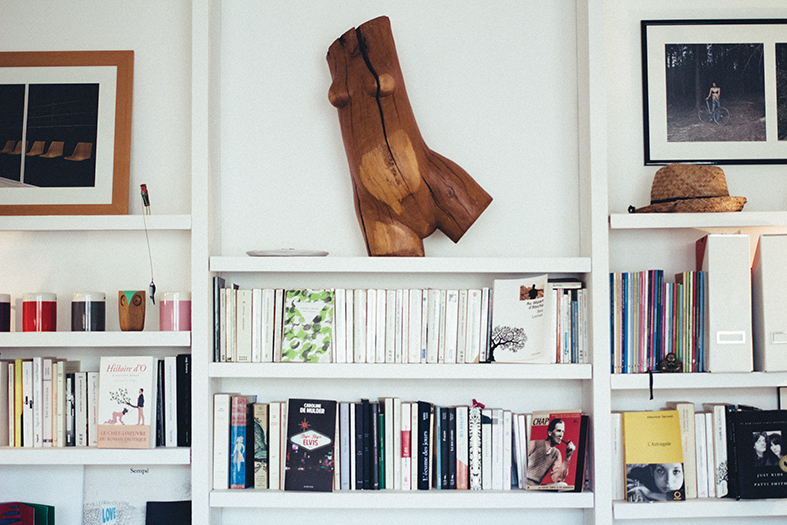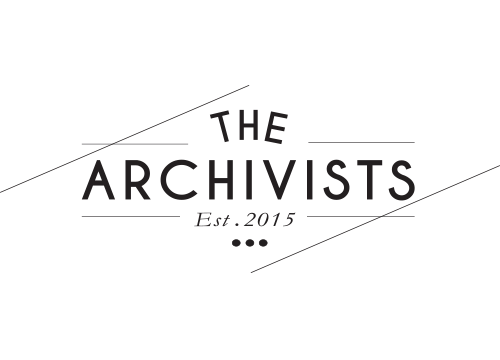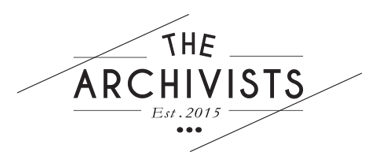
07 Apr SYLVAIN
Bookcase – Don’t be fooled by the austerity of this 1950s building on the Vieux-Port (old port) of Marseille. On the top floor, we discover that the architect knew what he was doing, as the apartment we enter is as functional as it is luminous. The space is not big, but the volumes are, and so it works. Books are in the main room that also serves as the living room, dining room and kitchen. The bookcase is not from the 50’s, and was imagined by the last owners of the flat. “The base is made of bricks but the shelves are removable”, explains Sylvain, who lives here. He continues: “You can put books there, of course, but its form allows you to display other objects too”. This mix pleases Sylvain. For him, a bookcase has to be open, to every kind of book, but also to art and beauty. Sylvain admits: “Here, conversations are often about the bookcase. But quickly, we move from books to objects.” It has to be said that he sculpts with wood. And when we see what he makes, we understand that his sculptures steal the show from the books.
From nature, to reading, to culture – His interest for nature led him to reading when he received, as a kid, two books about wildlife. “I learnt all the names of the animals, the birds, the trees… I knew everything better than most adults!” Sylvain realised then that reading was an opening on things he liked. Sylvain is not a passionate reader; he is a reader about passions. And there are many: everything about nature in general, but also hunting, fishing, sculpture, cooking and lately apiculture and permaculture. “I could talk for hours about permaculture” he warns us, and we believe him. To convince us, he shows us books by Pierre Rabhi, a French essayist, agriculturist, poet and modern prophet of the “simple living” theory.
And what about literature? “The idea of reading novels came later, with adulthood” he says. On the shelves we find without surprise the works of Marcel Pagnol (one of the most famous authors from Marseille of the 20th century), Ernest Hemingway and also some books that belong to the nature-writing genre. “Into the Wild by John Krakauer is the most famous title, but there are many other great authors!”
Cooking – In the kitchen, nature and books co-exist as well with cookbooks and fresh herbs standing side by side. Sylvain grabs a book: La cuisinière provençale (The Provencal Cook). “This book is unique! It’s a real bible here in Provence. You can find everything in it.” He opens it randomly on a recipe for partridge with cabbage. Sylvain reads: “Prepare the partridge like you usually do”. “See, you have to do it on your own, create your own habits… This book is really inspiring, full of traditions but it leaves everyone free to create their own style of cooking”.
He reads, hunts, fishes, cultivates, sculpts, and cooks. And this countryside landscape that we see here, did he paint it perhaps? “This, oh non, my grandfather did it!”
A FEW BOOKS TO BORROW FROM SYLVAIN:
The Old Man and The Sea by Ernest Hemingway, Scribner: “for a really thrilling adventure at sea, while staying warm and dry at home!”
My Father’s Glory & My Mother’s Castle. Marcel Pagnol’s Memories of Childhood, North Point Press: “a story that resembles my childhood. The South of France, the countryside, hunting and family…”
Permaculture by Sepp Holzer, Chelsea Green Publishing
Indian Creek Chronicles: A Winter in the Wilderness by Pete Fromm, Picador: the author looks back on the long winter he spent alone in the Rockies when he was 19 and in charge of checking daily on two million salmon eggs planted in a channel between the Selway River and Indian Creek. A great tale of adventure and a coming-of-age story.



